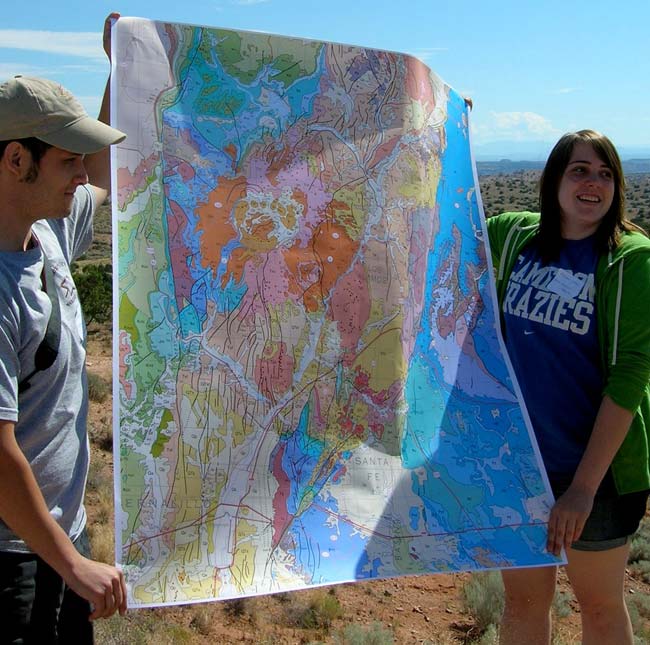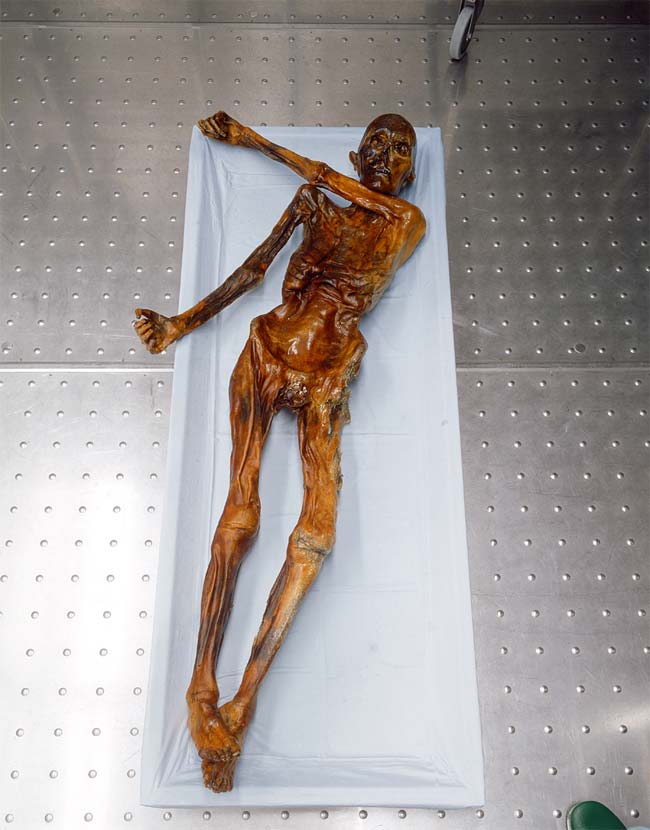
© Leslie MullenAllison Wetz and Martin Schmieder hold up a map that describes the complicated geology of the region near Santa Fe, New Mexico.
On a winding road near Santa Fe, New Mexico, exposed mountain walls form an intricate mosaic of brown, yellow, pink and grey rocks that stretch up toward the deep blue sky. To the untrained eye, these rocks are just a random jumble of different shapes and colors. To a geologist, however, such rock outcrops can tell a compelling story about the distant past.
One particular outcrop on this Santa Fe mountain pass whispers a thrilling tale of ancient cataclysmic violence.
Evidence suggests that a
large meteorite smashed into this area long ago. The force of the impact shattered the ground and tossed broken and pulverized rocks far and wide.
[Earth's Meteor Craters]Scientists are currently studying the Santa Fe impact structure to determine when this event took place. Right now they can only say the meteorite struck sometime between 1.2 billion and 330 million years ago. Certainly it happened far enough in the past for the impact crater to be completely altered or eroded.
Complicating the question is the "Great Unconformity", an event that wiped about a billion years of history out of the geologic record of this region. The disappearance of these tons of rocks was due to erosion -- seas receded, and the newly exposed rocks wore away through wind, rain and other weathering processes. Then the seas flooded in again and sediments began forming new layers.
The result is that a 330-million-year-old rock layer now lies directly on top of rocks that vary between 1.2 to 1.6 billion years old, depending on the location.
Whenever the impact occurred, scientists estimate the crater it carved out of the Earth was once between 6 to 13 kilometers in diameter. This makes it much larger than a more famous impact crater in this region: the 1.2 kilometer-wide
Meteor Crater in Arizona.




